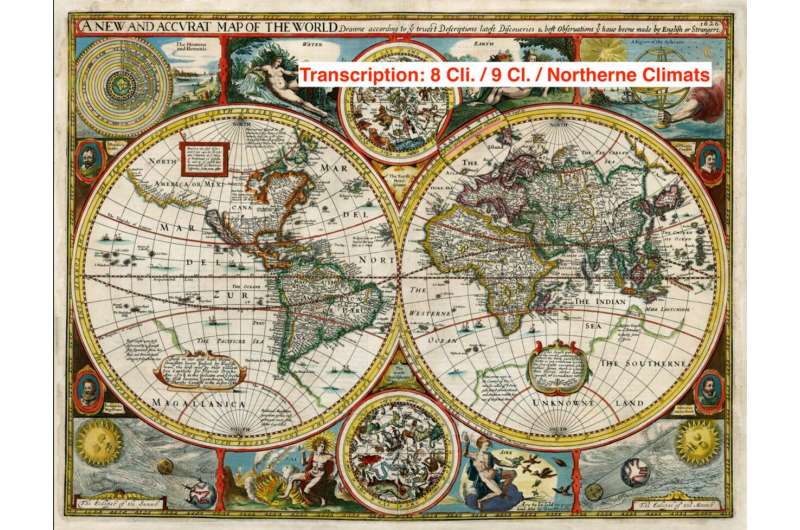A team of computer scientists, astronomers and historians in Berlin has used machine-learning applications to learn more about the evolutionary history of European astronomical thought in the 15th and 16th centuries. In their study published in the journal Science Advances, the group trained machine-learning applications to make sense of hand-written texts, graphs, charts and other data from textbooks of the era.
Over the past several decades, scientists from many fields have come to understand that there were few if any individuals who came up with a truly novel idea out of the blue. This is most certainly the case with scientific achievements, including those made in fields such as astronomy.
In this new study, the researchers note that there were many scientists besides Galileo, Kepler and Copernicus who contributed to the evolution of astronomical thought during the 15th and 16th centuries in Europe, and along with that, the education of those new to the field.
Many such people, they note, created texts to capture their ideas and/or to present them to others, either professionally or as a textbook. The researchers gathered more than 300 such texts as part of a study to better understand how the field of astronomy evolved. But they knew it would take much too long for a small team of humans to study, so they turned to machine learning.
The researchers trained a machine-learning application on 76,000 pages from textbooks, which included tables of numbers, images, markings and text. They developed several ways to get the machine learning app to understand what it was supposed to retrieve (numbers as opposed to text, for example) and then what to do with the information.
Once they had all the data processed, the team used the app in reverse to look for trends, one of which was the huge impact of developments in mathematics on astronomy. They describe the process as the mathematization of the field, part of which included standardization of formulas used to calculate stellar positioning, changes in defined climate zones and a means for sharing what was being learned across the continent.
-

Handling heterogeneity in table layouts poses a challenge for machine learning, as demonstrated by variations in typeface, layout, orientation, and page usage in the same sinus values table published in 1542 and 1587. Left: O. Finé, De Mundi sphaera, sive Cosmographia, primáve Astronomiae parte, Lib. V (Simon de Colines, Paris, 1542, p. 99). Right: O. Finé, Opere…Divise in cinque parti; arimetica, geometria, cosmografia, et orivoli (Francesco de Franceschi, Venice, 1587, Libro primo della Geometria, pp. 17v–18r). Credit: Library of the Max Planck Institute for the History of Science
-

Atomization-recomposition framework for model learning under sparse annotation settings. Credit: Science Advances (2024). DOI: 10.1126/sciadv.adj1719
-

Ptolemy’s world map. World map, as conceived in the Hellenistic era by Ptolemy, and whose oldest known exemplar was drawn during the 15th century by following Ptolemy’s list of coordinates and metric. The 7th climate zone clearly excludes all regions north of Paris, including current Great Britain (the northern border of the seventh climate zone is delineated by a superimposed red line). From: Ptolemy, Cosmographia. Map maker: Nicolaus Germanus. From: Ms. membr., lat., sec. XV, cc. I–II, 124, III–IV. 1460–1466. Biblioteca Nazionale di Napoli. Credit: Science Advances (2024). DOI: 10.1126/sciadv.adj1719
-

The geography of the editions. Geographical distribution of the production of the editions of the Sacrobosco Collection (1472–1650). Credit: Eberle et al., Sci. Adv. 10, eadj1719 (2024)
More information:
Oliver Eberle et al, Historical insights at scale: A corpus-wide machine learning analysis of early modern astronomic tables, Science Advances (2024). DOI: 10.1126/sciadv.adj1719
© 2024 Science X Network
Citation:
Machine-learning analysis tracks the evolution of 16th-century European astronomical thought (2024, October 31)
retrieved 31 October 2024
from https://phys.org/news/2024-10-machine-analysis-tracks-evolution-16th.html
This document is subject to copyright. Apart from any fair dealing for the purpose of private study or research, no
part may be reproduced without the written permission. The content is provided for information purposes only.

